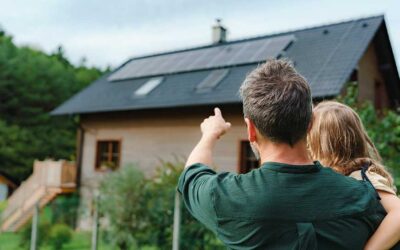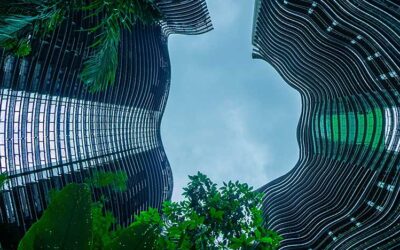The construction industry stands at a crossroads in an era marked by rapid urbanization, dwindling natural resources, and escalating concerns about climate change. Once celebrated for their efficiency and innovation, traditional building methods are now under the microscope for their environmental repercussions. This evolving landscape has led to sustainable construction—a holistic approach that promises a future where buildings harmonize with the environment. To fully grasp this transformative movement’s depth and breadth, we must explore its principles, methodologies, challenges, and potential.
Sustainable Construction: A Deeper Dive
Sustainable construction transcends the mere idea of “green building.” It embodies a comprehensive philosophy that prioritizes environmental responsibility and resource efficiency at every stage of a building’s life cycle—from its initial design and construction to its eventual demolition.
Foundational Principles of Sustainable Design:
Site Synergy: Before construction, sustainable design emphasizes selecting locations with minimal environmental sensitivities. The natural features, topography, and vegetation are leveraged to enhance the building’s efficiency and aesthetics.
Energy Evolution: The modern sustainable building is a marvel of energy efficiency. These structures drastically reduce their energy consumption through architectural innovations, advanced insulation, energy-efficient appliances, and the integration of renewable energy sources.
Water Wisdom: In a world where freshwater is becoming increasingly scarce, sustainable construction practices prioritize water conservation. This is achieved through innovative plumbing solutions, wastewater recycling, and landscaping that requires minimal irrigation.
Material Matters: The essence of sustainable construction lies in the judicious selection of materials. This involves a preference for sustainable, recycled, or recyclable materials with minimal environmental footprint.
Indoor Oasis: Beyond its external impact, a sustainable building also focuses on the internal environment. By using non-toxic materials and ensuring optimal ventilation, these structures offer a healthier and more comfortable living space.
Waste Not, Want Not: From the initial construction phase to daily operations, sustainable buildings emphasize a culture of waste reduction, reuse, and recycling.
The Global Footprint of Construction
The construction industry’s global impact is profound. Residential and commercial buildings are responsible for a significant portion of the world’s energy consumption and carbon emissions. Additionally, construction activities are major contributors to landfills and often lead to significant land degradation. By transitioning to sustainable construction methodologies, the industry can play a pivotal role in reversing these trends.
Sustainability Beyond Construction: Building Operations and Maintenance
While the construction phase is crucial, the subsequent operations and maintenance of a building also play a significant role in its overall sustainability. Key aspects include:
Efficient Building Management Systems (BMS): Modern BMS can monitor and control various building functions, such as HVAC, lighting, and security, optimizing energy use and ensuring efficient operations.
Regular Energy Audits: Periodic assessments can identify areas of energy wastage, leading to targeted interventions and upgrades.
Green Cleaning and Maintenance: Using eco-friendly cleaning products and practices can reduce the environmental impact and improve indoor air quality.
The Socio-Economic Impact of Sustainable Construction
Sustainable construction isn’t just about the environment; it also has profound socio-economic implications:
Job Creation: As the demand for sustainable construction grows, there’s potential for new job opportunities in green building design, renewable energy installation, and sustainable material production.
Health Benefits: Sustainable buildings often improve indoor air quality, natural lighting, and thermal comfort, improving occupant health and well-being.
Economic Savings: While the initial investment might be higher, sustainable buildings often result in long-term savings due to reduced energy and water consumption and lower maintenance costs.
The Global Movement: International Standards and Collaborations
Sustainable construction is a global endeavor, with countries around the world recognizing its importance and collaborating to set standards and share best practices:
LEED (Leadership in Energy and Environmental Design): An internationally recognized green building certification system providing third-party verification that a building was designed using strategies to improve performance across various sustainability metrics.
BREEAM (Building Research Establishment Environmental Assessment Method): A UK-based method of assessing, rating, and certifying the sustainability of buildings.
International Collaborations: Various global forums and conferences, such as the World Green Building Council and the International Conference on Sustainable Construction, facilitate the exchange of ideas, innovations, and best practices among nations.
Sustainable Construction Technologies: The Game Changers
As the demand for sustainable construction grows, so does the technology innovation that supports it. Some of the groundbreaking technologies include:
Building Information Modeling (BIM): This digital representation of a facility’s physical and functional characteristics allows for better decision-making throughout the building’s life cycle.
3D Printing: Used to create building components or even entire buildings, 3D printing reduces waste and allows for innovative designs that were previously challenging or impossible to achieve.
Smart Glass: This technology can change properties to control the light and heat that passes through, leading to significant energy savings.
Energy Monitoring Systems: These systems provide real-time data on a building’s energy consumption, allowing for adjustments and optimizations to reduce energy use.
The Role of Urban Planning in Sustainable Construction
Urban planning is crucial in ensuring that sustainable construction is not just an isolated endeavor but a part of a larger eco-friendly urban ecosystem.
Key considerations include:
- Transportation: Prioritizing public transport, walking, and cycling can reduce an area’s carbon footprint.
- Green Spaces: Parks and green areas enhance aesthetics, improve air quality, and provide recreational spaces for residents.
- Mixed-use Developments: These developments combine residential, commercial, and recreational spaces, reducing the need for transportation and promoting community interaction.
The Human Element: Training and Education
For sustainable construction to truly take root, it’s essential to have a workforce trained in its principles and practices. This involves:
- Educational Programs: Universities and technical institutes offering courses and degrees focused on sustainable construction.
- Workshops and Training: Regular training sessions for construction workers and professionals to stay updated with the latest sustainable construction techniques and materials.
- Public Awareness Campaigns: Educating the public about the benefits of sustainable construction can drive demand and encourage more widespread adoption.
Success Stories from Around the World
Highlighting successful sustainable construction projects can serve as inspiration and provide practical insights:
- The Edge, Amsterdam: Often referred to as the world’s greenest office building, The Edge boasts a BREEAM rating of 98.36%, the highest ever awarded.
- Bullitt Center, Seattle: Dubbed the “greenest commercial building in the world,” it meets all its energy requirements through solar panels and collects rainwater for all its water needs.
- One Central Park, Sydney: This residential tower features a vertical garden on its facade and a cantilevered section covered in solar panels.
GSA: Leading by Example
The U.S. General Services Administration (GSA) is an example of institutional commitment to sustainable construction. Their rigorous standards and adherence to sustainable design principles ensure that federal buildings serve their functional purpose and set a benchmark for environmental responsibility.
The New Age of Construction Materials
Innovation is at the heart of sustainable construction, particularly in the realm of materials:
- Cob and Adobe: Ancient materials that are coming back; these natural building materials are sustainable and efficient insulators.
- Green Concrete: A more environmentally friendly alternative to traditional concrete, it reduces construction’s carbon footprint.
- Cool Roofs: These roofs reflect more sunlight and absorb less heat, saving energy significantly.
- Living Walls and Roofs: Incorporating vegetation into building design enhances aesthetics, improves air quality, and reduces energy costs.
Challenges on the Horizon
Despite its evident benefits, sustainable construction faces its share of challenges. Initial costs can be higher, and there’s a steep learning curve involved in adopting new methodologies. Additionally, regulatory frameworks in many regions have yet to catch up with sustainable construction practices.
The Road Ahead
As public awareness grows and technology evolves, sustainable construction is poised to become the industry standard. Government incentives and increasing demand from environmentally-conscious consumers will further accelerate this shift.
Sustainable construction represents more than just a trend or industry buzzword; it’s a vision for the future. A future where human habitats seamlessly blend with the environment, ensuring a sustainable, harmonious existence for generations to come. As stakeholders in this global endeavor, it’s incumbent upon us to champion and embrace the principles of sustainable construction, paving the way for a greener, brighter future.




